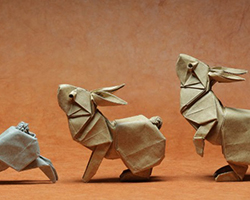Origami is the traditional Japanese art of paper folding. The goal of this practice is to transform a flat sheet of paper into a finished three-dimensional sculpture through delicate folding and sculpting techniques.
HISTORY
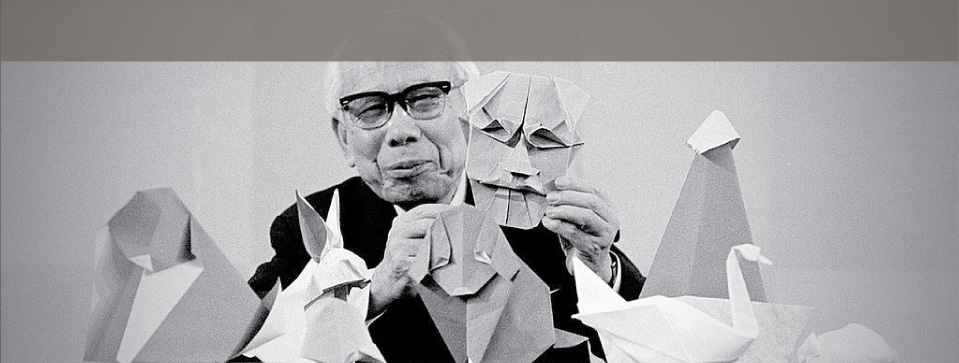
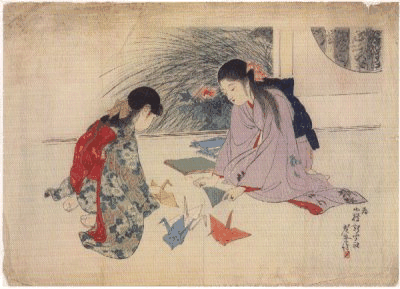
There is much speculation about the origin of Origami. While Japan seems to have had the most extensive tradition, there is evidence of an independent tradition of paperfolding in China, as well as in Germany, Italy and Spain, among other places. However, because of the problems associated with preserving origami, there is very little direct evidence of its age or origins, aside from references in published material.
In China, traditional funerals include burning folded paper, most often representations of gold nuggets (yuanbao). It is not clear when this practice actually started, but it seems to have become popular during the Sung Dynasty (905-1125 CE). The paper folding has typically been of objects like dishes, hats or boats rather than animals or flowers.
In Japan, the earliest unambig-uous reference to a paper model is in a short poem by Ihara Saikaku in 1680 which describes paper butterflies in a dream. Origami butterflies were used during the celebration of Shinto weddings to represent the bride and groom, so paperfolding had already become a significant aspect of Japanese ceremony by the Heian period (794-1185) of Japanese history, enough that the reference in this poem would be recognized. Samurai warriors would exchange gifts adorned with noshi, a sort of good luck token made of folded strips of paper.
In the early 1900s, Akira Yoshizawa, Kosho Uchiyama, and others began creating and recording original origami works. Akira Yoshizawa in particular was responsible for a number of innovations, such as wet-folding and the Yoshizawa-Randlett diagramming system, and his work inspired a renaissance of the art form. During the 1980s a number of folders started systematically studying the mathematical properties of folded forms, which led to a steady increase in the complexity of origami models, which continued well into the 1990s, after which some designers started returning to simpler forms.
PAPER
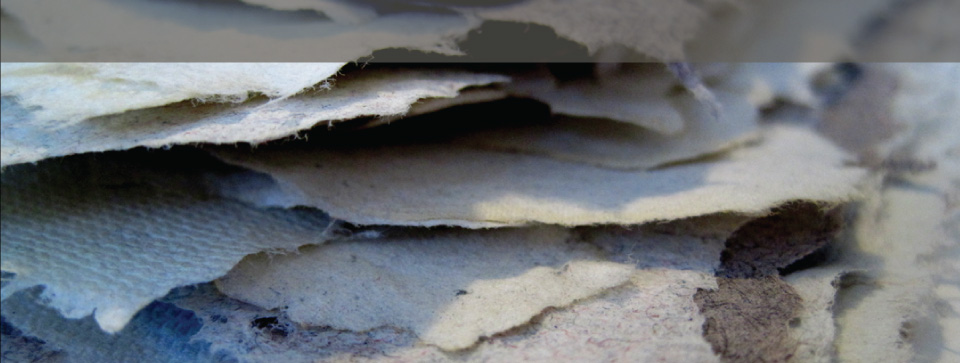
Origami paper, often referred to as "kami" (Japanese for paper), is sold in prepackaged squares of various sizes ranging from 2.5 cm (1 in) to 25 cm (10 in) or more. It is commonly colored on one side and white on the other; however, dual coloured and patterned versions exist and can be used effectively for color-changed models. Origami paper weighs slightly less than copy paper, making it suitable for a wider range of models.
Washi is the traditional origami paper used in Japan. Washi is generally tougher than ordinary paper made from wood pulp, and is used in many traditional arts. Washi is commonly made using fibres from the bark of the gampi tree, the mitsumata shrub (Edgeworthia Papyrifera), or the paper mulberry but can also be made using bamboo, hemp, rice, and wheat.
Artisan papers such as unryu, lokta, hanji, gampi, kozo, saa, and abaca have long fibers and are often extremely strong. As these papers are floppy to start with, they are often backcoated or resized with methylcellulose or wheat paste before folding. Also, these papers are extremely thin and compressible, allowing for thin, narrowed detailing. Almost any laminar material can be used for folding; the only requirement is that it should hold a crease.
TYPES
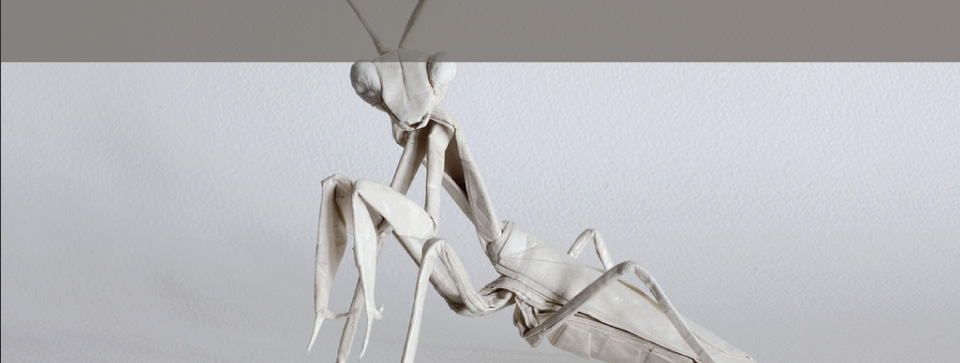
ACTION
Origami not only covers still-life, there are also moving objects; Origami can move in clever ways. Action origami includes origami that flies, requires inflation to complete, or, when complete, uses the kinetic energy of a person's hands, applied at a certain region on the model, to move another flap or limb. Some argue that, strictly speaking, only the latter is really "recognized" as action origami. Action origami, first appearing with the traditional Japanese flapping bird, is quite common. One example is Robert Lang's instrumentalists; when the figures' heads are pulled away from their bodies, their hands will move, resembling the playing of music.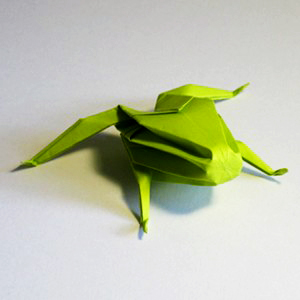
MODULAR
Modular origami consists of putting a number of identical pieces together to form a complete model. Normally the individual pieces are simple but the final assembly may be tricky. Many of the modular origami models are decorative balls like kusudama, the technique differs though in that kusudama allows the pieces to be put together using thread or glue. Chinese paper folding includes a style called Golden Venture Folding where large numbers of pieces are put together to make elaborate models. This style originated from some Chinese refugees while they were detained in America.
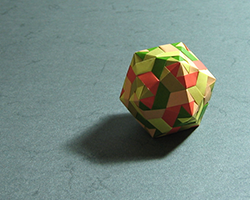
WET-FOLDING
Wet-folding is an origami technique for producing models with gentle curves rather than geometric straight folds and flat surfaces. The paper is dampened so it can be moulded easily, the final model keeps its shape when it dries. It can be used, for instance, to produce very natural looking animal models. Size, an adhesive that is crisp and hard when dry, but dissolves in water when wet and becoming soft and flexible, is often applied to the paper either at the pulp stage while the paper is being formed, or on the surface of a ready sheet of paper. The latter method is called external sizing and most commonly uses Methylcellulose, or MC, paste, or various plant starches.